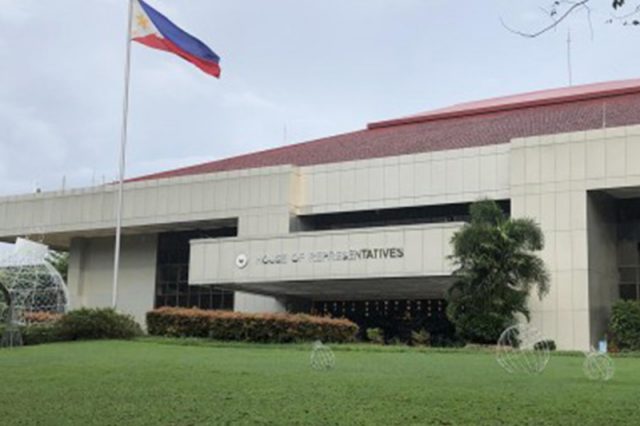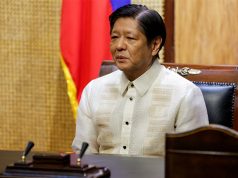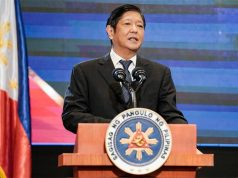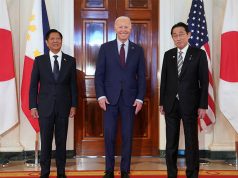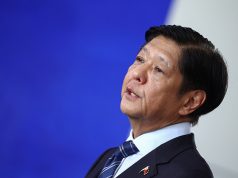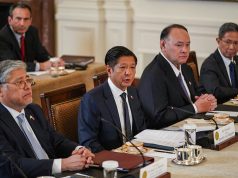Similar to his inauguration, security measures for President Ferdinand Marcos Jr‘s first-ever State of the Nation Address will be tight, with over 21,000 personnel to be deployed for the event.
Reports say there will be 21,853 people who will make up his security contingent on his initial annual address on July 25 to be held at the Batasang Pambansa Complex in Quezon City.
This is an increase from the previously reported 15,174 security forces that were planned, which would be composed of 9,919 National Capital Region Police Office personnel, 1,891 Philippine National Police forces and 3,364 individuals from other law enforcement agencies.
According to NCRPO director Maj. Gen. Felipe Natividad, the figures were increased due to supposed extensive planning.
“We are elated to report that everyone was so cooperative in addressing some flaws in the overall plan,” he said in a statement.
“We will continuously conduct dialogue and coordination meetings not only with our partners and counterparts, but also with the community and civil society leaders to determine and address concerns in order to ultimately achieve a peaceful and safe State of the Nation Address of PBBM,” Natividad added.
He also said that the same template and security package was utilized during Marcos’ inauguration.
Lt. Col. Jenny Tecson, NCRPO spokesperson, said that the contingent is not just limited to the SONA site but to border control points in Metro Manila and other engagement areas as well.
Apart from the national police, the contingent will also be from the Armed Forces of the Philippines, Philippine Coast Guard, Metropolitan Manila Development Authority, Bureau of Jail Management and Penology, Bureau of Fire Protection, force multipliers and other volunteer groups.
Zipper lanes will also be set up along Commonwealth Avenue, the main highway leading to the Batasang Pambansa.
Re-routing plans have been laid out by the MMDA to pave way for essential vehicles to freely utilize portions of the avenue.
Motorists also need to anticipate stricter police inspections in “Oplan Sita” checkpoints by foot and mobile patrol teams.
In addition, reports say there will be a prohibition against firearms outside of residence in Metro Manila from July 22 to 27.
For comparison, when former president Rodrigo Duterte conducted his third SONA in 2018, reports said there were around 6,000 cops and 600 soldiers deployed to various parts of Metro Manila.
In his fourth SONA, over 14,000 cops were expected to provide security for him and the attendees.
By his penultimate address, the number decreased to over 7,000 personnel since the event only had 50 physical attendees due to the onset of the COVID-19 pandemic.
In Duterte’s last annual SONA, the figure returned to about 15,000 officers as more guests were allowed to attend. At that time, vaccines against the coronavirus were already administered to some Pinoys.
During former president Noynoy Aquino’s term, there were 10,000 cops deployed for his final SONA.
Meanwhile, the number of security forces for Marcos’ annual address didn’t escape some Filipinos’ observation.
“‘Yung sa last SONA, 15k personnel lang ‘yung dineploy, ngayon 21k na. Kawawa naman ‘yung mga tax payer, nasasayang pambayad nila kasi need nila pasahuran ‘yung 21k tapos isang tao lang babantayan. Sana gamitin na lang sa makabuluhang bagay ‘yung mga tax namin,” a Pinoy from Twitter partly said.
“Ano ang threat?” another online user asked in response to the increase in security.
A different Filipino commented that the SONA could be held in the headquarters of either the PNP or AFP following the number of security personnel to be deployed.
“Sa Crame o Aguinaldo niyo na lang gawin ang SONA,” the online user tweeted.
The SONA is one of the greatest security challenges of any government since the event convenes the highest officials of the land in one place. Measures must be implemented to protect the president, vice president and the Congress against perceived threats and incidents.

